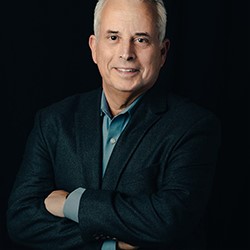
”Woke Up Call”: Universities Need a Brand Reboot.
Many of America’s most renowned colleges and universities have been in the headlines for all the wrong reasons. In the wake of turmoil over colleges’ responses to the latest social and geo-political uproar, a much deeper fissure has been laid bare that has the potential to break the brands that elite schools count on to court students, donors, and faculty alike.
While diversity, equity, and inclusion initiatives are critical factors that contribute to any school’s environment, in recent years, many top colleges have begun to lose their way by letting carefully calibrated DEI motions and messaging threaten to overtake communication of their primary mission — and that which their brands stand for — providing the best education available.

A COMMENTARY by Allen Adamson, Co Founder of Metaforce.
This first appeared as part of thought leadership content provided to Metaforce clients.
The Internationalist featured it as part of our Global Marketing at the Crossroads series.
The fact of the matter is that institutes of higher learning are brands. The same principles apply to any Fortune 500 company, non-profit, or educational institution:
Your mission is your North Star.
Your brand is its expression.
Focus is critical.
Today, many elite universities have lost sight of their core “brand promise.” When what the brand stands for is no longer clear — or becomes irrelevant — it spells trouble. There is no better time than the present for elite universities to reckon with this.
Press releases, mea culpa walk-backs of legally worded, tone-deaf responses to simple questions, updated websites, and new campaigns are never the answer when brands get into trouble.
While the root cause of such trouble is often a loss of relevance or differentiation in customers’ minds, in the case of colleges and universities, the complexity of the “customer” audience compounds the problem.
Who are the customers of universities and colleges? In business, it is almost always clear who the primary customer is, which drives focus and clarity of message. Unfortunately, higher ed is more complex; there are many stakeholders, and every school tends to prioritize different audiences, from faculty, students, applicants, and tuition payers to donors. So, simply focusing on the core “customer” does not provide clarity.
The stronger an organization’s core focus, the stronger the brand. This principle is critical in large organizations like colleges where humans deliver the brand experience, not products. In these organizations, you are in trouble if every employee cannot quickly tell you what is “on” and “off” brand. One cause of the above is just relying on the mission and values created by committees, which are often so broad they end up being useless in helping leaders make decisions and usually don’t help define what is ” on” or “off” brand.
The other cause is losing focus on what matters to customers. Some universities seem to have inverted their brand pyramids, prioritizing supporting messaging and motions (environmental factors like diversity, equity and inclusion, free speech, safe speech, etc) instead of their primary brand promises (providing the best education) and their differentiation (best faculty, students, programs, and outcomes.) Imagine FedEx saying we can’t deliver your package on time, but we are doing many other nice things.
What’s the fix for universities? It’s not a committee to propose a 10-point action plan. And it is not only a president who leads with clarity. Sometimes, presidents get selected by biased boards that seek to enhance their personal agendas. The rehabilitation of a university brand is too massive and critical a task to be borne solely by a president and board. Lots of objective, dispassionate, intellectual firepower is needed. Thus, getting outside talent to help reshape university brands and clarify a more precise, more relevant, and differentiated mission is critical.
A brand can focus an organization on what matters to its faculty and staff, students, parents, and donors. Ask FedEx’s Fred Smith or consider how Steve Jobs used a brand focus to build Apple.
Allen Adamson is a noted expert in all disciplines of branding. Today, he serves as co-founder and managing partner of Metaforce, a disruptive marketing and brand consultancy that takes a multidisciplinary, channel-agnostic approach to driving growth.
His new book, Seeing the How: Transforming what people do, not buy, to gain market advantage, explores why today’s most successful businesses have significantly transformed our daily routines, or literally, “made life as we live it better.”
His previous books, including BrandSimple and, most recently, Shift Ahead, are used as textbooks in higher education business programs nationwide.
After holding senior management positions at Ogilvy & Mather and DMB&B, Adamson joined Landor Associates, a full-spectrum brand consultancy, and eventually became chairman. Under his leadership, the company partnered with global brands, including Accenture, GE, Johnson & Johnson, FedEx, HBO, Marriott, MetLife, P&G, Sony, and Verizon.
Additionally, he guided non-profit organizations such as the 9/11 Memorial and Museum. For the past several years, he has been an adjunct professor at New York University’s Stern School of Business, where he also serves as the brand expert-in-residence at the Berkley Center for Entrepreneurship.



